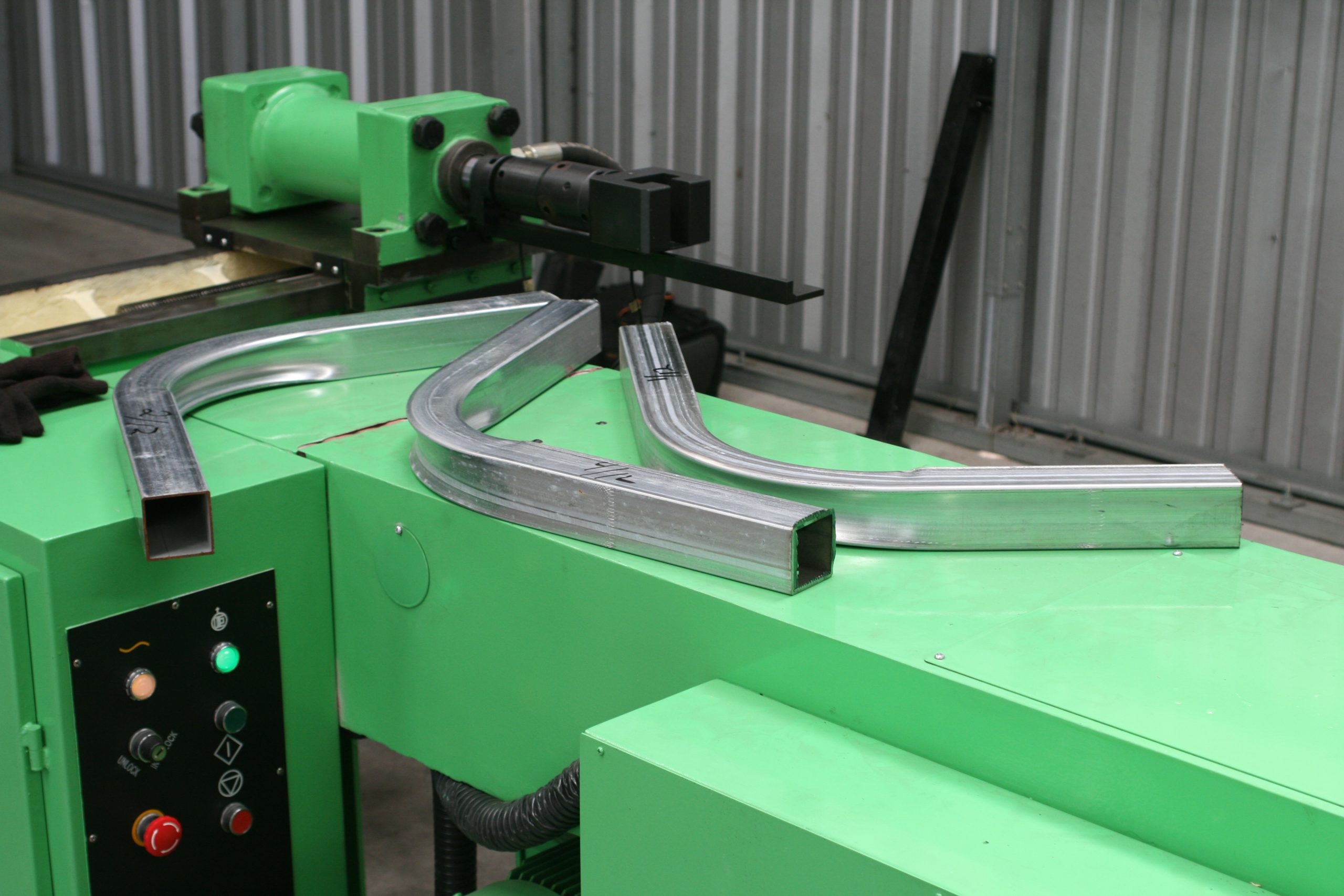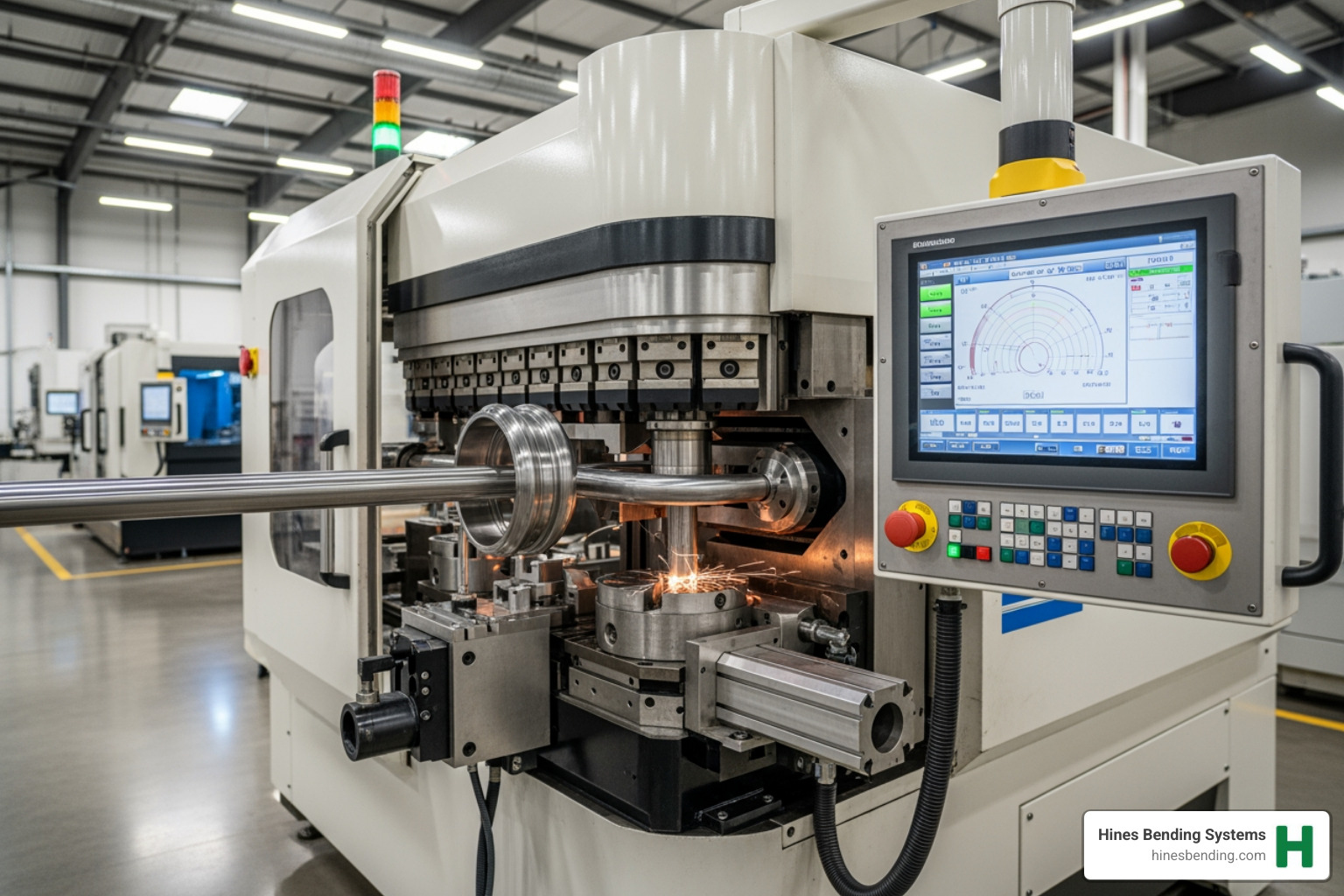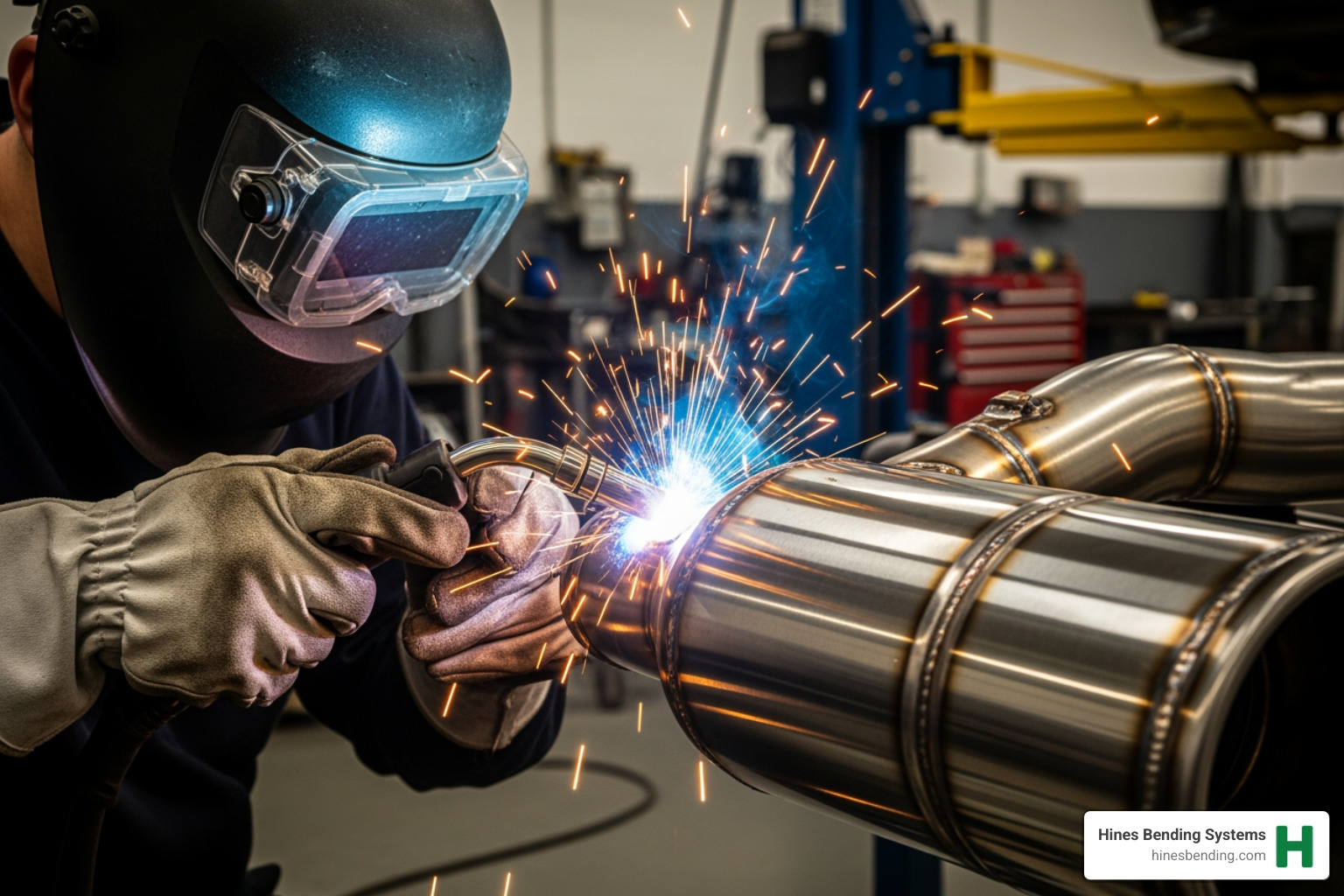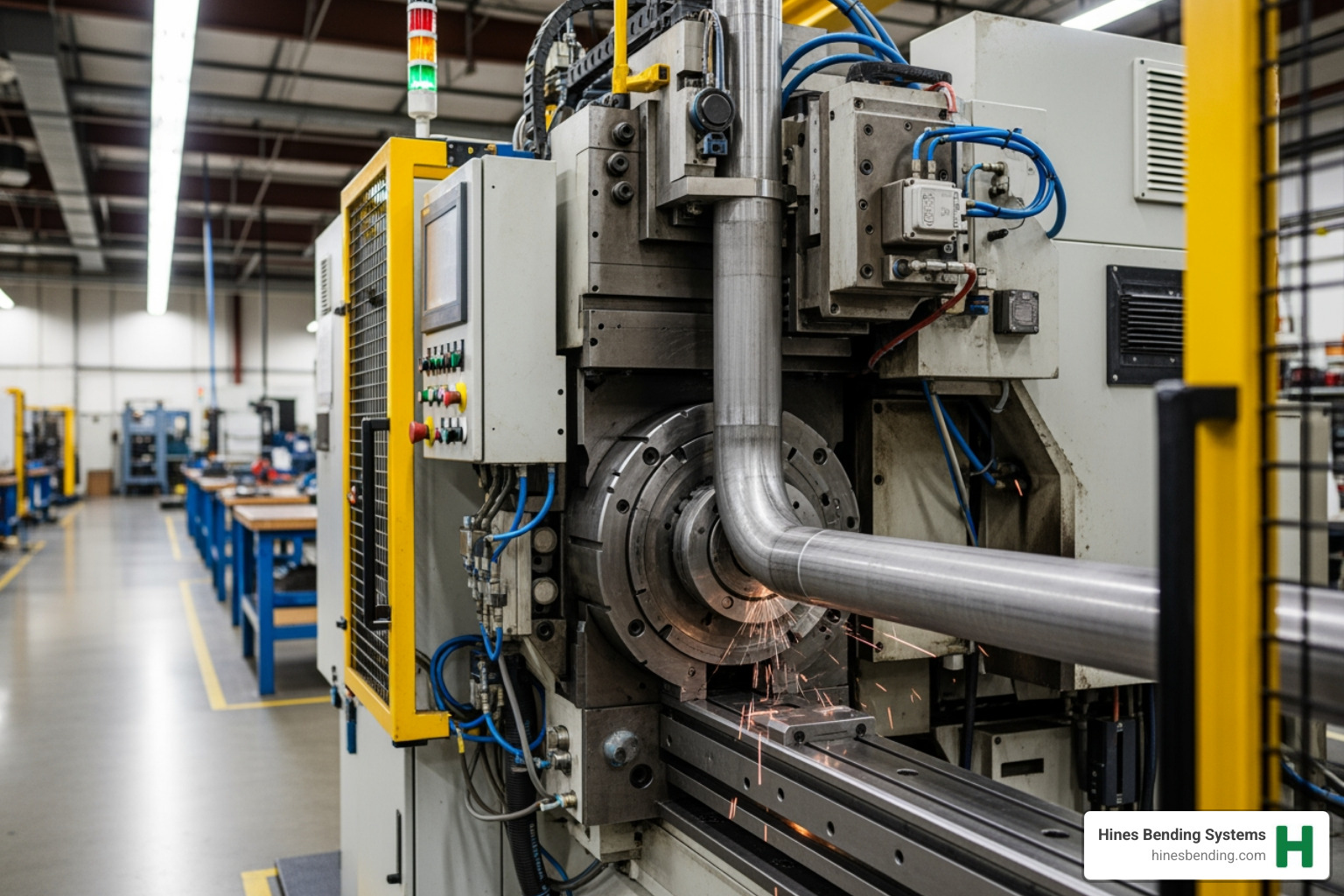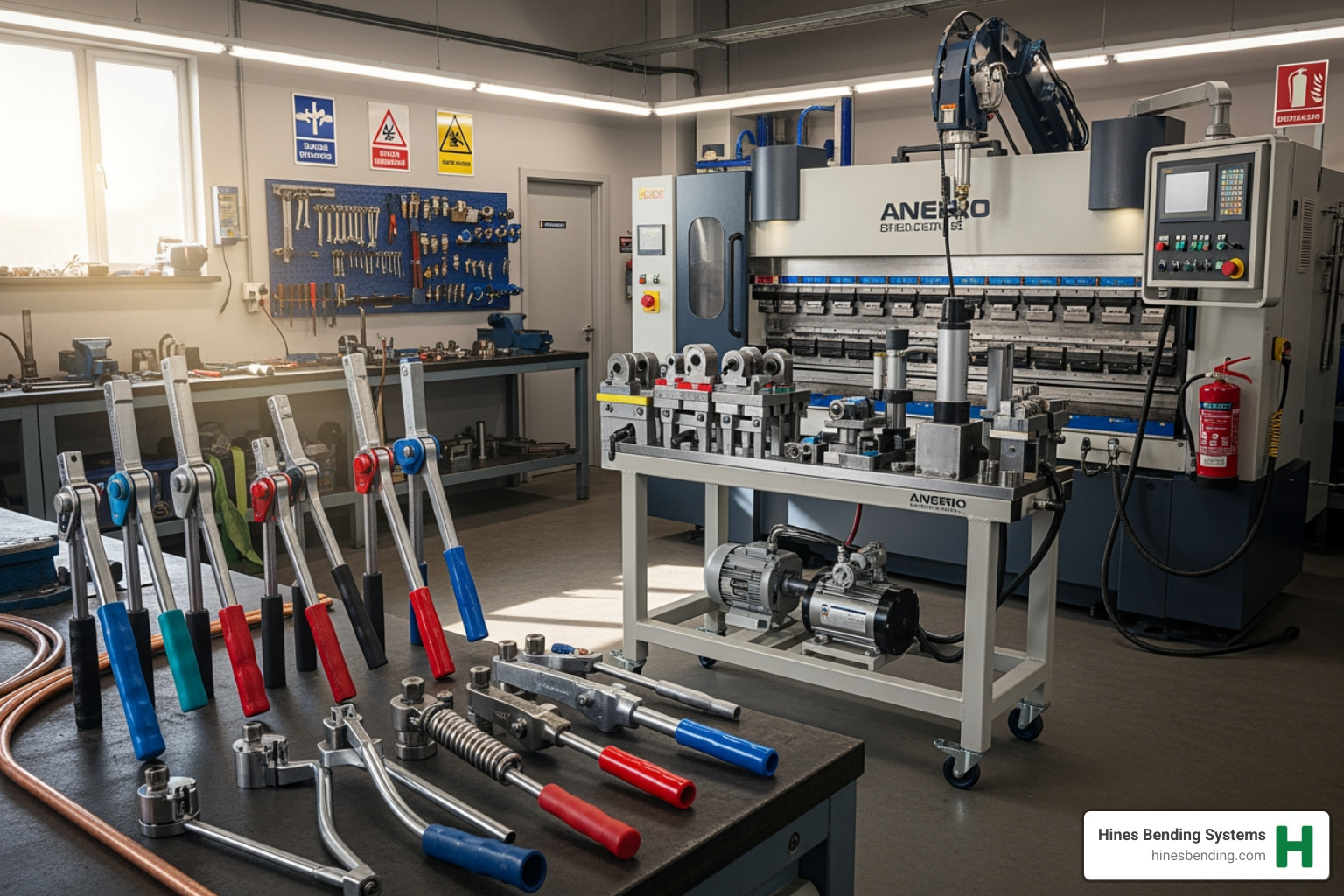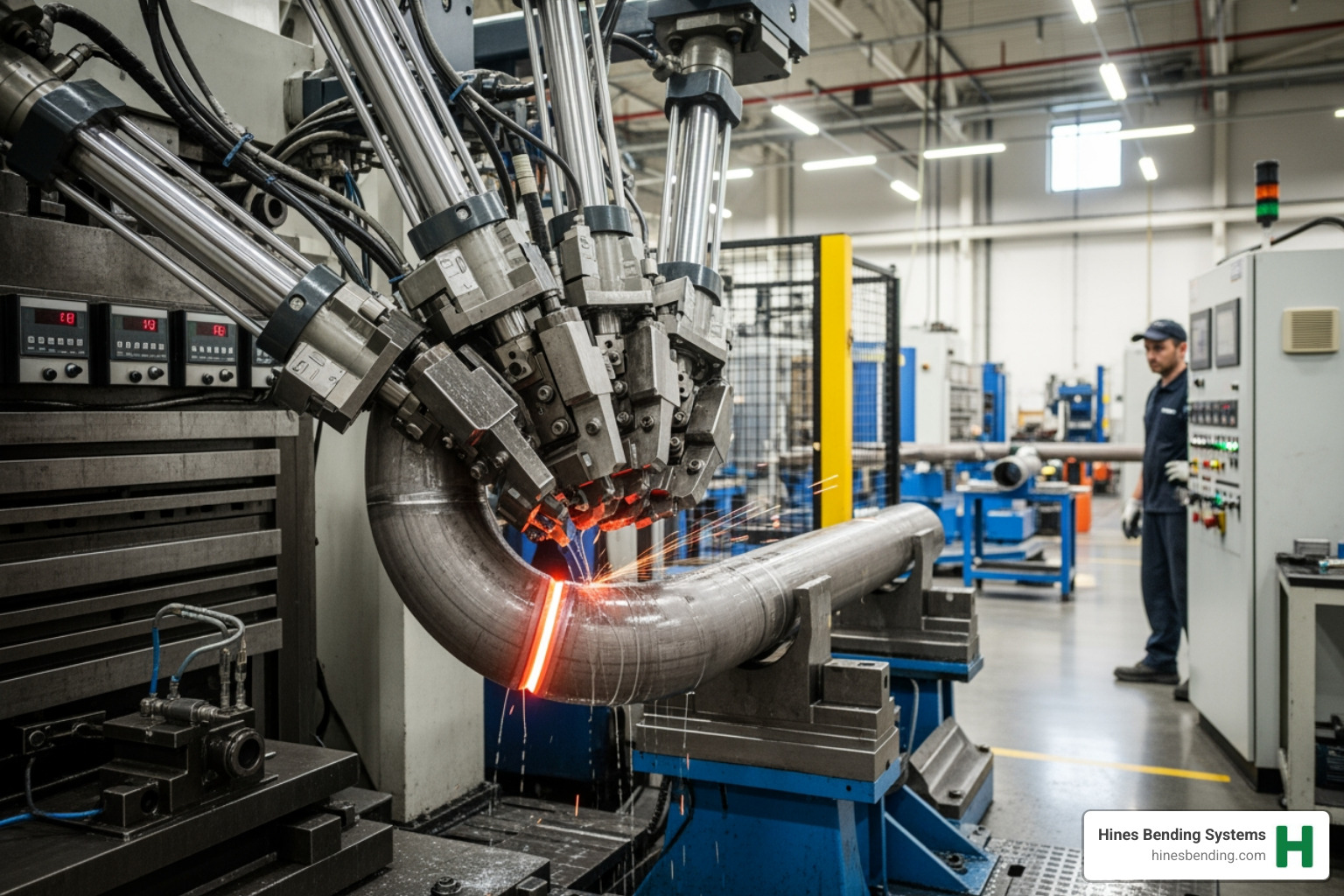When you bend aluminum tube there are some key things to consider. The good thing? Quality aluminum tube benders and the right tooling do get the job done. Some bending experience and tricks of the trade will help too. Let’s look at aluminum tube more closely and what you need to purchase aluminum tube benders for sale.
Shape of the Aluminum Tube
Aluminum tube comes in different shapes and sizes. Often the aluminum tube material is not round. Bending rec or square aluminum tube is popular and bent with a crush or a mandrel. The crush bend will show the collapse of the inside bend area, like that of a school cafeteria chair leg. The mandrel bend will keep the original shape of the aluminum tube. The aluminum tube benders for sale and tooling made specifically for the aluminum tube job bend specifications become key. Tooling is especially important if you want to keep the shape and aesthetics of the aluminum tube through the bend.
Mandrels on Aluminum Tube Benders for Sale
Basically, a mandrel is held in a fixed position while the aluminum tube is pulled over it. Aluminum tube, like most materials under bend stress, want to stretch on the outer radius of the bend. Likewise, aluminum tube compression occurs on the inner radius of the bend. To keep ovality of aluminum tube, your mandrel takes the force exerted on the tube during a bend. To bend aluminum material you use a chrome mandrel. A wiper die completes the bend process by eliminating any wrinkles on the inside bend area of the aluminum tube.
When bending certain aluminum tube jobs it may only require a mandrel plug. Also referred to often as a mandrel shank. The requirement for a mandrel will be determined by a wall factor equation. The wall factor along with the radius and degree of bend will dictate whether the aluminum tube job requires a mandrel. Bottom line, you want to purchase aluminum tube benders with mandrel capability if you know you want to keep its shape.
Age Hardening and Aluminum Tube Benders
There are specific materials that perform better under bending stress. In the case of aluminum tube, age hardening is always a concern. Age hardening means that the aluminum tube gets harder the longer it sits. This also means it becomes harder to bend too. For this reason, aluminum tube is subject to material failure (ie. cracking) during the bend process. As aluminum tube sits and hardens the elongation decreases. It is always recommended to coordinate the aluminum tube supply order to bend it up when it arrives. With a larger radius and a bend less than 90 degrees there is some leeway in the stress placed on the aluminum tube material. However, the tighter the radius, the more likely you will encounter issues when bending aluminum tube.
What about 6061 Aluminum Tube?
The most common aluminum tube alloy that comes up with bending on aluminum tube benders is 6061. It is a heat treatable alloy with various levels of tensile strength. 6061-T0 has the best elongation percentage for bending and often used in aluminum tube jobs with tight radius bends. Think aircraft parts. 6061-T6 has the least elongation, and often used with jobs with larger radii. Since 6061-T6 has far less elongation, often in the 12% range, some jobs may require annealing before bending. Whether bending T0 or T6 the more experience bending aluminum tube you have will go a long way to understand the properties and bend stress of this material.
Call or email Hines Bending Systems today and ask about aluminum tube benders for sale now. We will help you every step of the way. From installation of your aluminum tube bender to training and service. Let the bend experts at Hines Bending share the trick of the trade to make your aluminum bends successful.
